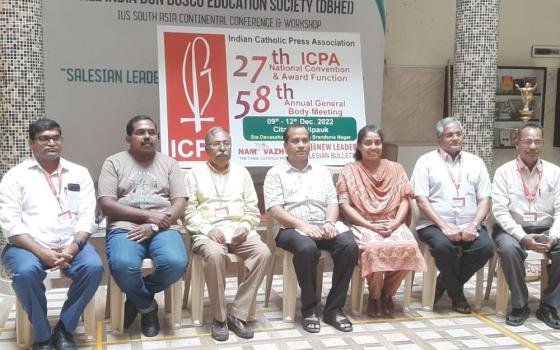This week at Q & A, we are focusing on the contributions made to America, and to the Catholic Church in the United States, by those whose parents were immigrants and who might, therefore, lose their citizenship if this ridiculous tinkering with the 14th Amendment were actually to be enacted. Our first example is James Cardinal Gibbons, Archbishop of Baltimore from 1877 until his death in 1921. Gibbons was one of the “anchor babies” the right wing is yapping about. He was born in Baltimore in 1834 but his family moved back to Ireland in 1839, only returning to the United States in 1853. Commenting on Gibbons and his extraordinary contributions to America and the American Church is Sean Caine, communications director for the Archdiocese of Baltimore:
In a time when Catholic leaders wince at the thought of being photographed with a politician for fear of being branded “pro this” or “anti that” it is nearly impossible to imagine a Prince of the Church among the most trusted advisors to several U.S. presidents. In doing so, Cardinal James Gibbons not only showed—but personified—how Roman Catholicism was a natural part of American life.
President William Taft praised his “single-minded patriotism and love of country on the one hand and…sincere devotion to his Church and God, on the other.” President Theodore Roosevelt said to the longest serving Archbishop of the nation’s oldest See of Baltimore: “I think you now occupy the position of being the most respected and venerated and useful citizen of our country.” Lofty praise for a man who was born the son of Irish immigrants and who himself spent his childhood and adolescent years living not in America, but Ireland. (Lest anyone question his allegiance, as a young priest Gibbons served as an Army chaplain at Baltimore’s Fort McHenry, ministering to the Union and Confederate soldiers who were either stationed or imprisoned there during the Civil War.)
Perhaps it was his unique composition—part American-born citizen, part quasi-Irish Immigrant, part Churchman—that drove America’s leading prelate to become a champion for the “Americanization” and assimilation of generations of Catholic immigrants, seeing the neighborhood parish as the safe haven where newcomers could maintain their heritage while moving toward the mainstream of a largely Protestant society. Cardinal Gibbons saw the United States as a nation where religion and nationalism could co-exist and hailed the “Americanism” of the Catholic Church in a speech in his titular church of Santa Maria in Trastevere, Italy, in 1887, that still echoes today and which turned European heads to the young and thriving Church in America, offering it as an example of a healthy relationship between Church and state.
Following his death in March 24, 1921, over 200,000 citizens paid their respects as Cardinal James Gibbon’s body lie in state in Baltimore’s Cathedral of the Assumption of the Blessed Virgin Mary. As the Requiem Mass began, Maryland’s Governor ordered all activity in the state suspended for a full minute. Eulogizing the Cardinal, Bishop Thomas J. Shahan said: “It was as a minister of Jesus Christ, as an humble, unselfish and zealous priest, concerned chiefly about the divine and eternal interests of his people and his country, that he went about his beloved city and state…guiding a society whose defects and errors he well knew were rooted in spiritual ignorance rather than malice…”




